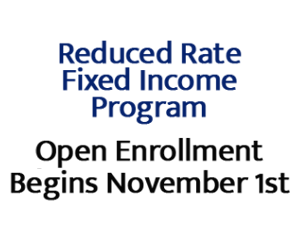Leaks: How to Check Them
![]() How to check for water leak at your business or residence
How to check for water leak at your business or residence
Follow these simple steps to find out if your system has sprung a leak:
Finding water leaks can save you water, which means saving money on water and sewer bills. Therefore, follow these easy steps to determine if you have a leak in a domestic or a sprinkler irrigation system.
Step 1.
Turn all water-using appliances off so that no water is being used. This means turning off all water inside and outside the house including showers, sinks, washing machines and any appliance that uses water. Additionally, if you have a sprinkler irrigation system, turn off the controller and manually shut off the two valves at the double check valve assembly (DCVA) to isolate the irrigation system.
(See photo)

Step 2.
Take the lid off the meter box and lift the protective cover. (See photo below) Be sure to replace lid when finished.

Watch the meter
Your meter will have a triangular red or silver and black round disc that is commonly called a leak indicator.
- If it is spinning, you have a leak. If there is no indicator and the actual meter dial hand is moving, water is running somewhere in your system and you have a leak –Go to step 3.
- If the hand is not moving, note the position of the hand and wait 10 minutes. Check the meter again, if it has moved then you have a slow leak – Go to step 3. However, if not then you do not have a leak.


Step 3.
Locate the main shut-off valve (See photo at left) to the house. This can be located close to the meter box, close to the waterline entrance into the building, in a basement or garage.
Step 4.
Then, turn off the valve. Note: If water is leaking on the street side of the meter, contact the Alabaster Water Board. This leak will not affect your water consumption or bill. Additionally, it is extremely important that you notify the AWB to avoid a possible future service line break.
Step 5.
Turn on a faucet inside the house to test.
- If water still flows from the faucet after several seconds, the shut off valve is not working.
- If no water flows through the faucet, the shut off valve is working. Return to the meter.
Step 6.
Check if the meter leak indicators hand is moving.
- If the leak indicator or dial hand is still moving, water is flowing between the meter and the shut-off valve. Then, that means you have a leak between the meter and the customer-side shut-off valve.
- If it is not moving, then you have a leak between the customer-side shut-off valve and possibly somewhere in the house. Check toilets, washing machines, faucets, etc., for any leak.
Step 7.
To check a toilet for a leak: Flush the toilet and while the tank is still filling, add 2 or 3 drops of food coloring to the water in the tank.
Note: Free dye testing tablets are available at the Water Board office.

Wait 15-30 minutes. If the water in the bowl changes colors, the flapper valve needs to be replaced.


Step 8.
To check a Bathroom, Kitchen or Outdoor Faucet: Most faucet leaks are plainly visible as drips coming out of the faucet aerator. Occasionally, faucets may leak in other places such as the on/off handles or the pipe below the basin. Conversely, you may have a leak in the piping if there are visible drips coming from the piping or if there are wet, damp areas underneath the sink. (See photos below).

Step 9.
To check an Irrigation System or a Service Line from Meter to Building: Indications of leakage in an irrigation system include overgrown or very green areas of turf, soggy areas around sprinkler heads and above ground hoses, jammed spray heads, and torn hoses. A leak in a service line from the meter to the building is also indicated by greener patches of turf in the lawn. (See photos below).

Step 10.
To check a Water Heater, Dishwasher, and Washing Machine: Water heater and dishwasher leaks are generally visible by a puddle of water on the floor in front of and around the appliance. As a matter of fact, washing machine leaks are fairly common and usually noticeable with water dripping at the hose connections at the back of the appliance or at the wall connection (See photos below).

Click here for a self-serve Leak Detection Checklist Form.



